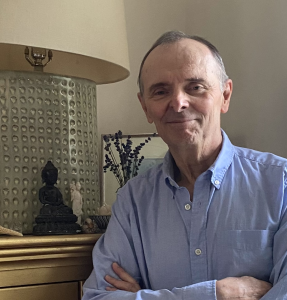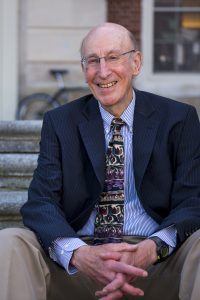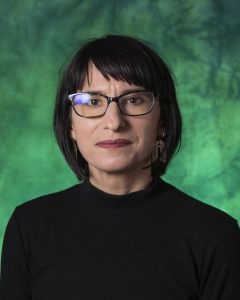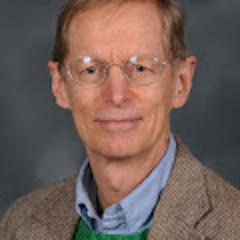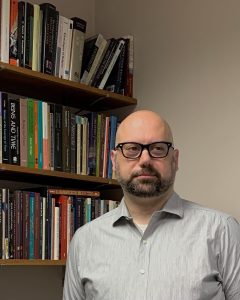 Elizabeth Burns is Reader in Philosophy of Religion at the University of London, and Programme Director for the University of London Distance Learning Programmes in Divinity (email: elizabeth.burns@london.ac.uk). Her publications include What is this thing called philosophy of religion? (Routledge, 2018). We invited her to discuss comparative philosophy of religion as part of our “Philosophers of Religion on Philosophy of Religion” series.
Elizabeth Burns is Reader in Philosophy of Religion at the University of London, and Programme Director for the University of London Distance Learning Programmes in Divinity (email: elizabeth.burns@london.ac.uk). Her publications include What is this thing called philosophy of religion? (Routledge, 2018). We invited her to discuss comparative philosophy of religion as part of our “Philosophers of Religion on Philosophy of Religion” series.
The philosophical problems associated with petitionary prayer to the God of classical Christian theism are well-known and, in philosophical accounts of the late twentieth and early twenty-first centuries, at least, difficult to solve (see, e.g., Davison 2017). In this post I will consider whether a form of mindfulness meditation can retain some features of petitionary prayer while avoiding these philosophical difficulties.
This comes with a major proviso. There are many forms of meditation, each of which has been influenced by its cultural context, and some of which contain supernatural elements which do not feature in what David L. McMahan refers to as the ‘Standard Version’, a form of mindfulness meditation which has become popular in the twentieth and twenty-first centuries as a way of improving psychological wellbeing (2023: 6, 17). I will refer mostly, although not exclusively, to that ‘Standard Version’ which, although a modern development, at least has its origins in the many traditions and texts of historical Buddhism.
Perhaps the two most significant philosophical problems for petitionary prayer are as follows:
i. Why do we need to tell an omniscient God something which God must already know?
ii. If God is omniscient, omnipotent, and good, why do some prayers remain unanswered?
I will take the Lord’s Prayer of Luke 11:2-4, its shortest form, as a paradigm of Christian prayer. It contains five petitions, as follows:
Father, may your name be revered as holy.
May your kingdom come. [Some texts add ‘Your Holy Spirit come upon us and cleanse us’ or ‘Your will be done, on earth as in heaven’.]
Give us each day our daily bread.
And forgive us our sins,
for we ourselves forgive everyone indebted to us.
And do not bring us to the time of trial. [Some texts add ‘but rescue us from the evil one’ or ‘from evil’.]
(New Revised Standard Version Updated Edition https://www.biblegateway.com/passage/?search=Luke+11%3A2-4&version=NRSVUE; an extended version may be found in Matthew 6: 9-13).
Elements of at least four of these petitions may be found in Buddhist teaching and practice. For example:
1. This ‘Three-fold Puja’ by Ven. Sangharakshita expresses reverence for the Buddha, the Dharma and the Sangha:
‘We reverence the Buddha, the Perfectly Enlightened One, the Shower of the Way.
We reverence the Dharma, the Teaching of the Buddha, which leads from darkness to Light.
We reverence the Sangha, the fellowship of the Buddha’s disciples, that inspires and guides.’ https://thebuddhistcentre.com/system/files/groups/files/threefoldpuja.pdf2. The second petition of the Lord’s prayer, particularly in its extended form, is concerned with moral development and practice, since God’s kingdom will come only if transformed Christians work to bring this about. Something similar may be seen in the practice of compassion meditation or loving-kindness meditation, as in this example by Helen Weng and the Center for Healthy Minds at the University of Wisconsin, Madison: https://ggia.berkeley.edu/practice/compassion_meditation. We would do well to note, however, Mikel Burley’s warning that, if we wish to deepen ‘our understanding of religion in all its messy variety’, we cannot assume that ‘compassion’ has the same meaning in all religions (2020: 118).
3. The petition concerning forgiveness, for ourselves and others, has a parallel in forgiveness meditation, an example of which may be found here: https://www.buddhanet.net/e-learning/forgiveness.htm
4. The petition about avoiding temptation also has significant parallels in Buddhist teaching and meditation. For example, in the Dhammapada (https://www.buddhanet.net/pdf_file/scrndhamma.pdf), the Buddha teaches that ‘[t]hose meditative ones who tread the [eightfold] path are released from the bonds of Mara’ (20: 276), where Mara is understood as the demon, either literal or metaphorical, who tempts humankind away from the path of virtue. Wisdom enables them to follow the eightfold path through which they avoid temptation, and wisdom ‘springs from meditation; without meditation wisdom wanes’ (20: 282).
None of these four petitions seem to involve telling an omniscient God something which God must already know since each petition is largely, if not always completely, answered as a consequence of making the petition. Similarly, the problem of unanswered prayer is less significant if petitioners play a considerable part in answers to prayer.
At first sight, however, the petition concerning daily bread does appear to be a straightforward request for something for which we are ultimately dependent on forces external to ourselves. But Thomas Aquinas (1224/5-1274) suggests that ‘daily bread’ could refer to ‘sacramental bread’ (Summa Theologiae, Second Part of the Second Part, Question 83, Article 9: https://www.newadvent.org/summa/3083.htm#article9), a daily memorial of Jesus’ death and resurrection which serves as spiritual food. This interpretation is also found in much earlier texts (as recorded in, for example, Meyer’s NT Commentary, https://biblehub.com/commentaries/matthew/6-11.htm). It could be argued that meditation, too, is a source of spiritual food, a transformational process which, as B. Alan Wallace suggests, is likened in the Samyutta Nikaya and the Anguttara Nikaya to that of refining gold (2009: 174).
If this is at least a possible interpretation of the petition concerning daily bread, it avoids the philosophical objection that petitionary prayer tells God something which we would expect an omniscient God to know, since the purpose of the petition is to express desire for a spiritual good, and thereby to attain it. This interpretation is supported in Jesus’ teaching that his followers should not worry about what they will eat or drink because God knows that they need such things (Luke 12: 29-30; see also Matthew 6: 31-32), and by descriptions of Jesus as the ‘bread of life’ (e.g. John 6: 35).
This interpretation also avoids the objection that some prayers are not answered. Many people do not have daily bread in the literal sense so if, as seems likely, at least some of them have prayed for it, their prayers have not been answered. But if all five petitions of the Lord’s Prayer are, in fact, petitions which can only be answered as we make those petitions, then it is possible that unanswered prayers are prayers for things for which we should not pray. Aquinas quotes St John Damascene (b 676) who says that ‘prayer is the raising up of the mind to God’ (Question 83, Article 1), and that ‘to pray is to ask becoming things of God’ (Question 83, Articles and 1 and 5). For Aquinas, then, the Lord’s Prayer ‘teaches us to ask … for all that we may rightly desire’ (Question 83, Article 9).
Although key features of the Lord’s Prayer may be found in meditative practices associated with Buddhism, then, it is not necessary to abandon Christian petitionary prayer in favour of some form of mindfulness meditation in order to avoid common philosophical difficulties. Others (e.g. Stead (2016), Moe (2017), and Tyler (2018)) have noted the similarities – as well as important differences – between Christian prayer and Buddhist meditation, and argued both that mindfulness may be found in the Christian contemplative tradition (e.g. Stead x, 18, 32), and that contemporary Christianity can learn from contemporary mindfulness meditation. Further exploration of this might be one way to overcome what sometimes appears to be an impasse in the study of the philosophical problems associated with petitionary prayer.
References
Burley, Mikel (2020) A Radical Pluralist Philosophy of Religion: Cross-Cultural, Multireligious, Interdisciplinary (London: Bloomsbury Academic).
Davison, Scott (2017) Petitionary Prayer: A Philosophical Investigation (Oxford: Oxford University Press).
McMahan, David L. (2023) Rethinking Meditation: Buddhist Meditative Practices in Ancient and Modern Worlds (Oxford: Oxford University Press).
Moe, David Thang (2018) ‘Barth and Buddhism: A Theology of Prayer and Meditation in Christian and Buddhist Exchanges’ in Journal of Yoga and Physiotherapy 5(5): 555675. DOI: 10.19080/JYP.2018.05.555675.
Stead, Tim (2016) Mindfulness and Christian Spirituality: Making Space for God (London: SPCK).
Tyler, Peter (2018) Christian Mindfulness: Theology and Practice (London: SCM Press).
Wallace, B. Alan (2009) Mind in the Balance: Meditation in Science, Buddhism and Christianity (New York: Columbia University Press).






